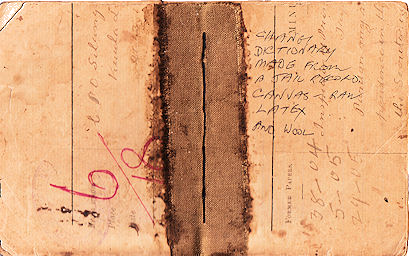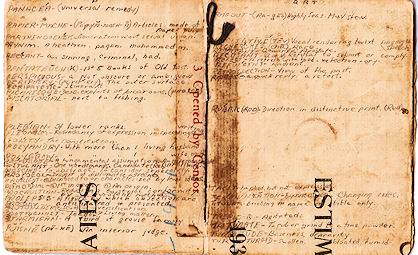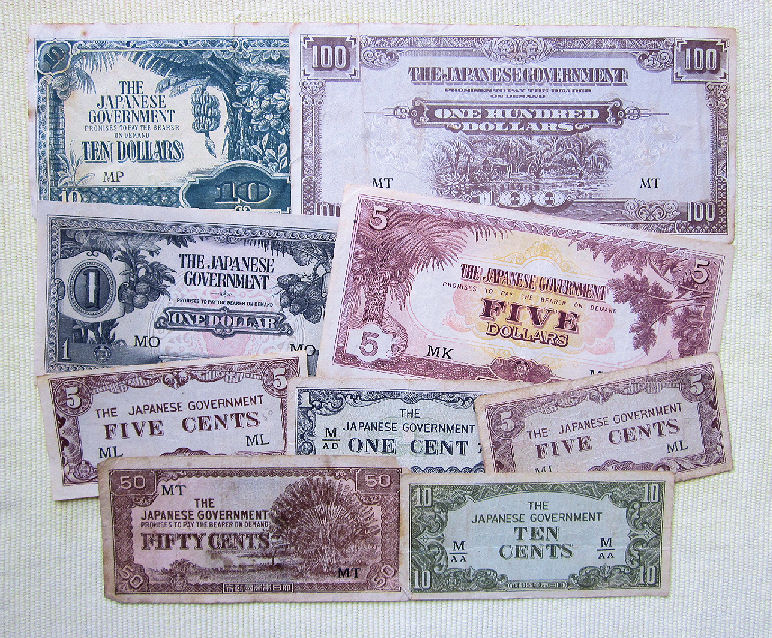Artefacts and Memorabilia
There were no cameras allowed after the British surrender so much was recorded by those with a talent for sketching, painting or writing - expression or in poems.
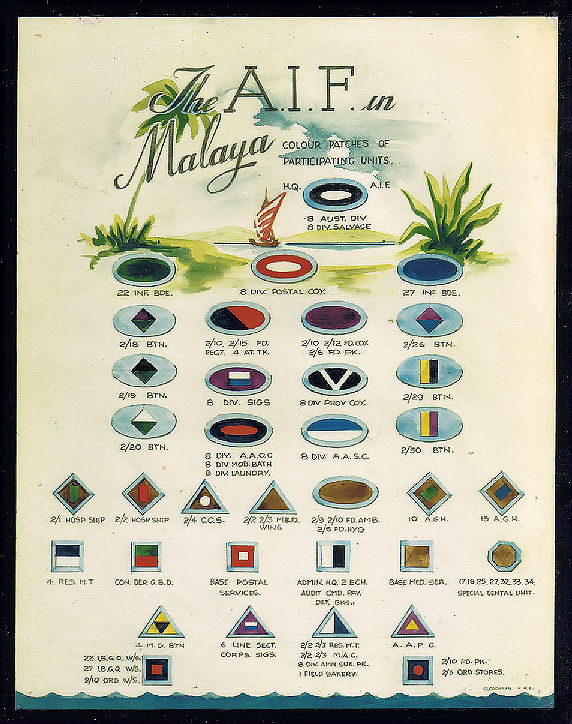 |
| This hand painted plaque records all the Australian Troops that were in Malaya during those terrible times. |
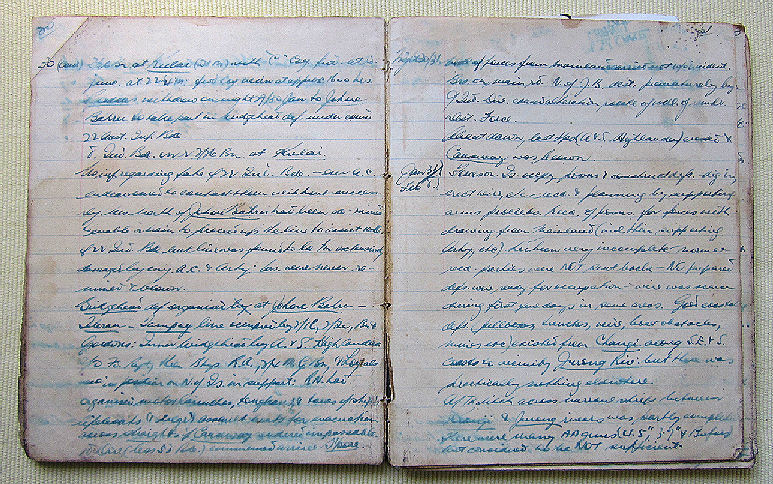 |
| Bob's "War Diary" survives to this day and the first 47 pages are an account of the positions and withdrawls in Malaya and Singapore Island of both his battalion and supporting troops, until the "Final Perimeter from Singapore Airport to Singapore Station". The diary is shown open at pages 20 and 21 being the withdrawl onto Singapore Island during the night of 30/31st January 1942 at 0200 after which the causeway was blown. After the British surrender the war diary was of little use however Bob kept a detailed record of the march from Banpong to Staniki, together with a host of data including casualties, vegetable production back in Changi (even down to tonnage per ton of urine and every man's expected volume donation to the "pee party"), lists of NOK for his men, Changi Industries, poems and sketches of buildings and such in Changi. The keeping of such a diary was illegal under the IJA jurisdiction and it had to be kept well hidden. |
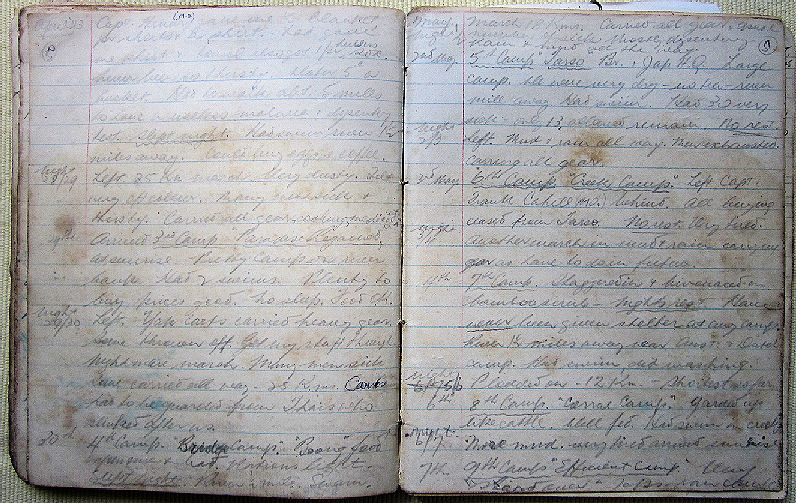 |
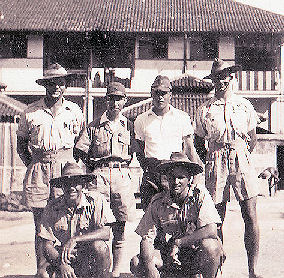 |
| Before 'F' Force and the railway, a rare photo of Bob (far right) with Mr Oucheda - prison interpreter - a brutal "Christian gentleman". |
 |
| A drawing form Bob's diary - his map of the Thai - Burma railway. |
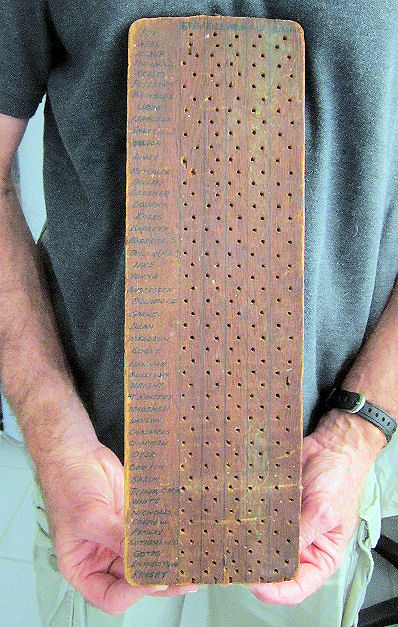 |
| Seldom seen - the Hut E1 "backup board" - a little piece of history, "the barometer of our lives" was this hut "Totem". Read more about the backup board |
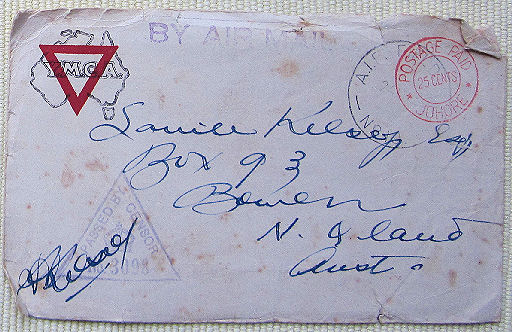 |
| A typical letter sent home before the British surrender, unable to contain much apart from "I'm well, hope you are the same" - "fighting the Japs" - "haven't washed for a week..." - all letters were censored and the appropriate stamp afixed. The YMCA provided a collection and handling service to the troops as did the Red Cross and the Salvation Army but only the YMCA remained in Singapore after the surrender. |
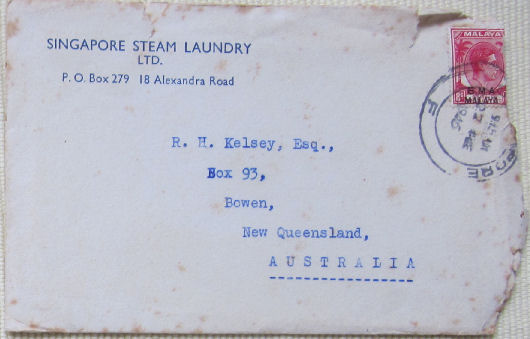 |
| After the war, a letter arrived in Bowen from the owner of the Singapore Steam Laundry where Bob worked for a while before going up on the Death Railway - the Japs had seconded the laundry and incarcerated the owner in a camp at Perak, after the Jap surrender the laundry was given back to its owner who, with his wife, survived their internment and Bob received a letter thanking him for thinking of the welfare of the chinese workers, in particular the foreman Charles Pestana Yeo, while he was detailed there. To be remembered for kindness in a most turbulant time must have been a quite moving experience. |
Japanese Occupational Money - called "Banana Money"
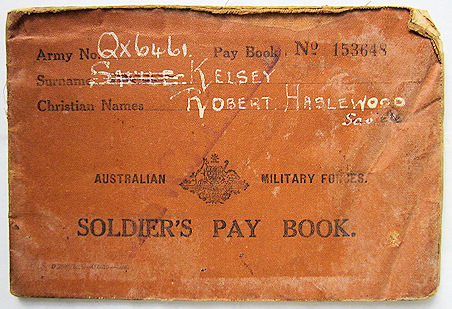 |
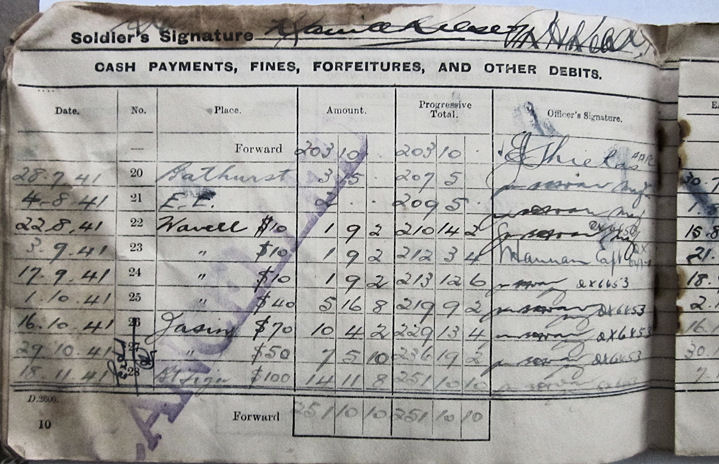 |
 |
|
| Australian Military Forces, Soldier's paybook and Japanese IJA paybook. | |
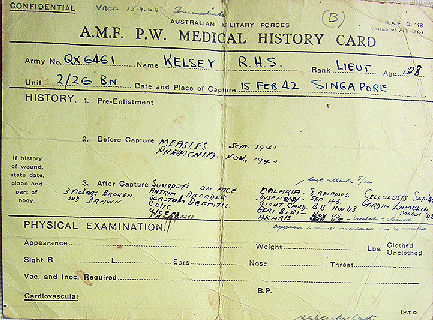 |
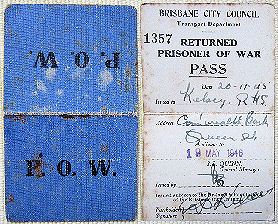 |
| Bob's Medical Record card which somehow survived the years of imprisonment. | Bob's POW Brisbane City Council free public transport pass after his discharge back into "civvie street". |

